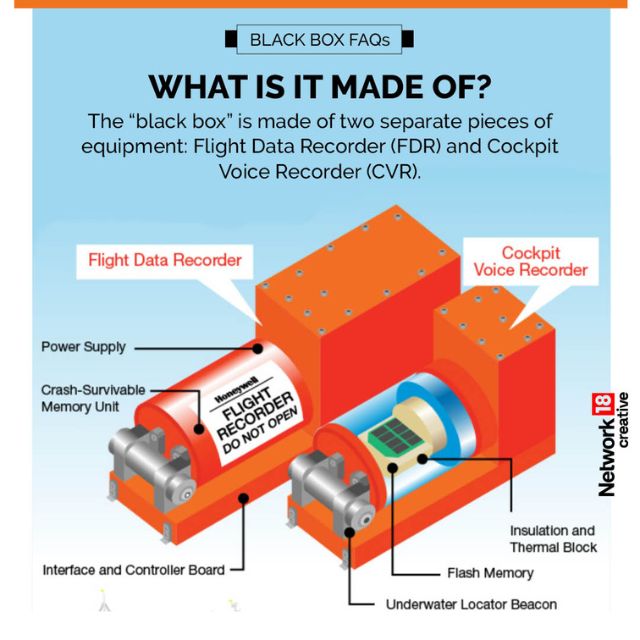Every time a plane crashes, investigators begin searching urgently for the ‘black box’.
On Friday, one such box was found at the site where the Air India flight had crashed in Ahmedabad a day earlier.
The Boeing 787-8 had 242 people on board when it came down in the Meghani Nagar area of the city, crashing into the mess area of a medical college hostel.
Read Ahmedabad Plane Crash live updates here.
Out of the 242 on board, 241 lost their lives. Only one person survived. Another 24 people who were on the ground were also killed, bringing the total number of deaths to 265.
But what exactly is a black box? Why is it so crucial? And what can it reveal about what led to the crash?
Let’s answer these questions for you:
Explained: What is a black box?
Despite the name, a black box is actually a bright orange device made to survive severe crashes and fires.
Every commercial aircraft carries two of these recorders. Their use dates back to the early 1950s. The first flight recorder was created by Australian scientist Dr David Warren (1925-2010).
ALSO READ | The tragic story of a Rajasthan doctor couple, their 3 kids who were killed in Air India crash
The two black boxes found on any aircraft are the cockpit voice recorder (CVR) and the flight data recorder (FDR). The CVR captures all sounds in the cockpit, including pilot conversations, radio exchanges, alarms and mechanical noises. Meanwhile, the FDR logs key details such as altitude, speed, engine power and the plane’s flight path.

These devices are protected by strong casings designed to withstand explosions, intense heat, water pressure and high-speed impacts.
According to the American National Transportation Safety Board (NTSB) website, depending on the incident, investigators may focus on sounds like engine noise, stall alerts or other unusual clicks. These sounds can help them work out the engine’s condition or whether any systems failed.
Impact Shorts
More ShortsIn 2014, NTSB investigators told the Associated Press that the flight data recorder stores up to 25 hours of data. This can include earlier flights within that period, which may sometimes hold clues to what caused a technical fault later on.
What does the black box contain?
A black box has four main parts: an interface for recording and playback, an underwater locator beacon, a crash ‘survivable’ memory unit able to withstand a force 3,400 times greater than gravity, and the circuit board with its recording chip.
Why is it called a black box?
As per the Airbus website, long before David Warren’s invention, French engineer Francois Hussenot had developed a data recording system in the 1930s. His device used sensors to project around ten flight details onto a strip of photographic film.
This film was stored in a container that blocked out all light. Because of its light-proof design, the container came to be known as a “black box”.
Why black box is important in air crash
After a plane crash, the black box becomes the most important tool for investigators.
It helps reconstruct the final moments of the flight, capturing what took place in the cockpit and within the aircraft systems, second by second.
ALSO READ | Miracle survivor of Air India plane crash and other rare solo escapes from air disasters
This information is important for understanding what went wrong and for improving safety measures to prevent similar events.

In India, the Directorate General of Civil Aviation requires every commercial aircraft to carry a black box. Today, even small planes are fitted with them.
These devices are made from tough materials like titanium or stainless steel so they can survive crashes, fire, and deep-sea pressure.
Across the world, black box data has helped solve major aviation accidents, from the Germanwings crash in 2015 to the Malaysia Airlines cases. In India, the investigation into the 2020 Kozhikode crash used black box data to piece together pilot choices and runway conditions at the time of landing.
One black box found: What happens next?
With the recovery of the black box from Air India Flight AI-171, the next step is to send it to a forensic lab run by either the DGCA or the Aircraft Accident Investigation Bureau (AAIB).
At the lab, investigators will:
Retrieve and study the data stored in the memory units
Match the cockpit voice with flight data recordings
Compare these with radar logs and Air Traffic Control (ATC) exchanges
In the coming days, the findings from these devices will be key to understanding the cause of one of India’s worst aviation disasters in recent times.
With inputs from agencies
)